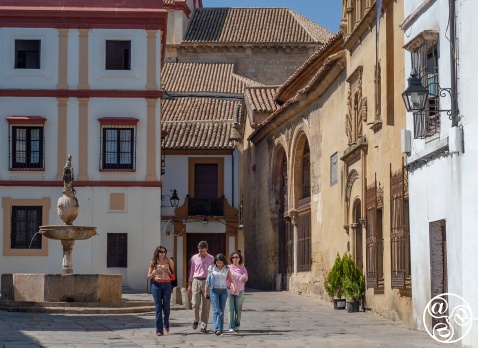
The Museum of Julio Romero de Torres (1874-1930) is located in the same building as the fine arts museum |
|
The Julio Romero de Torres Museum in Córdoba, Spain, is a unique cultural gem dedicated to one of the country’s most celebrated painters, Julio Romero de Torres (1874–1930). Located in the artist’s birthplace, this museum offers an intimate glimpse into the life and legacy of the man known for capturing the essence of Andalusian culture, beauty, and mystique in his works.
The Museum of Julio Romero de Torres (1874-1930) is also located in the same building as the fine arts museum, it is where he once lived and now houses this famous contemporary Cordoba painters' works.
Museum Overview
Housed within a charming early 20th-century building, the museum shares its space with the Fine Arts Museum of Córdoba, which adds to its rich artistic atmosphere. The museum itself is arranged in several halls that take visitors through Torres' artistic evolution, featuring his iconic portrayals of Spanish women and the vibrant, sometimes haunting landscapes of Andalusia.
It also has works of other famous baroque, renaissance and contemporary painters; Zurbarán, Alejo Fernandez, Antonio del Castillo and Valdés Leal.
You visit four rooms and discover the life and work of the painter from his first paintings to his later more symbolic work which includes "La Copla", "Naranjos y Limones" (a nude study 1928) and "La Chiquila Piconera".
Highlights of the Collection
The museum’s collection is a tribute to Torres' unique style, characterized by his symbolist, realist, and sensual depictions that emphasize the beauty, melancholy, and pride of Andalusian life. Among the notable pieces on display are:
- “La Chiquita Piconera” – This is one of Torres' most famous works and an emblem of Spanish art. It portrays a young woman with a contemplative expression, embodying the complex allure of Córdoba.
- Portraits of Andalusian Women – Torres' portraits of Andalusian women, often depicted with dark eyes and a serene expression, celebrate the strength and elegance of Spanish femininity.
- Religious and Allegorical Works – These include paintings that draw on Spain’s deep Catholic tradition and convey themes of mysticism, spirituality, and human struggle.
- Many of his works appear to feature well proportioned nudes in skilled poses. "Cante Hondo" is his most macabre work (1930), "Look how lovely she was ¡Mira qué bonita era!" a deathbed scene (1895)
Museum Experience
Beyond the paintings, the museum also displays personal items, sketches, and photographs that offer insight into Torres' life and creative process. Informational plaques and interactive screens provide visitors with historical context and analyses, making the museum a deep and enriching experience for art lovers and newcomers alike.
Practical Information
- Location: The museum is situated on Plaza del Potro, a picturesque square in Córdoba’s old town, making it easily accessible from the city center.
- Opening Hours: Hours vary seasonally, so it’s advisable to check in advance, especially during holidays.
Book your stay in Andalucia Now!
